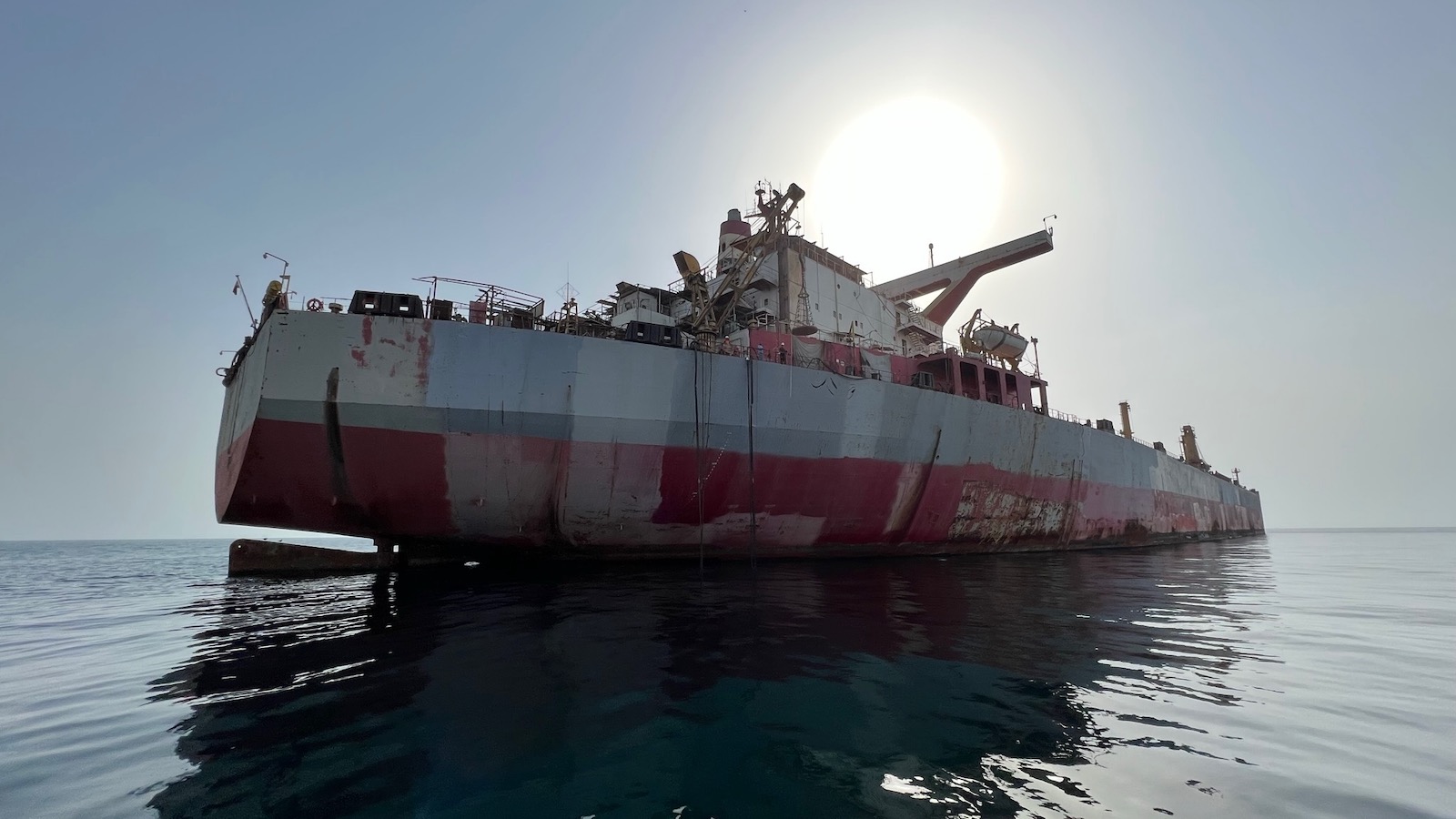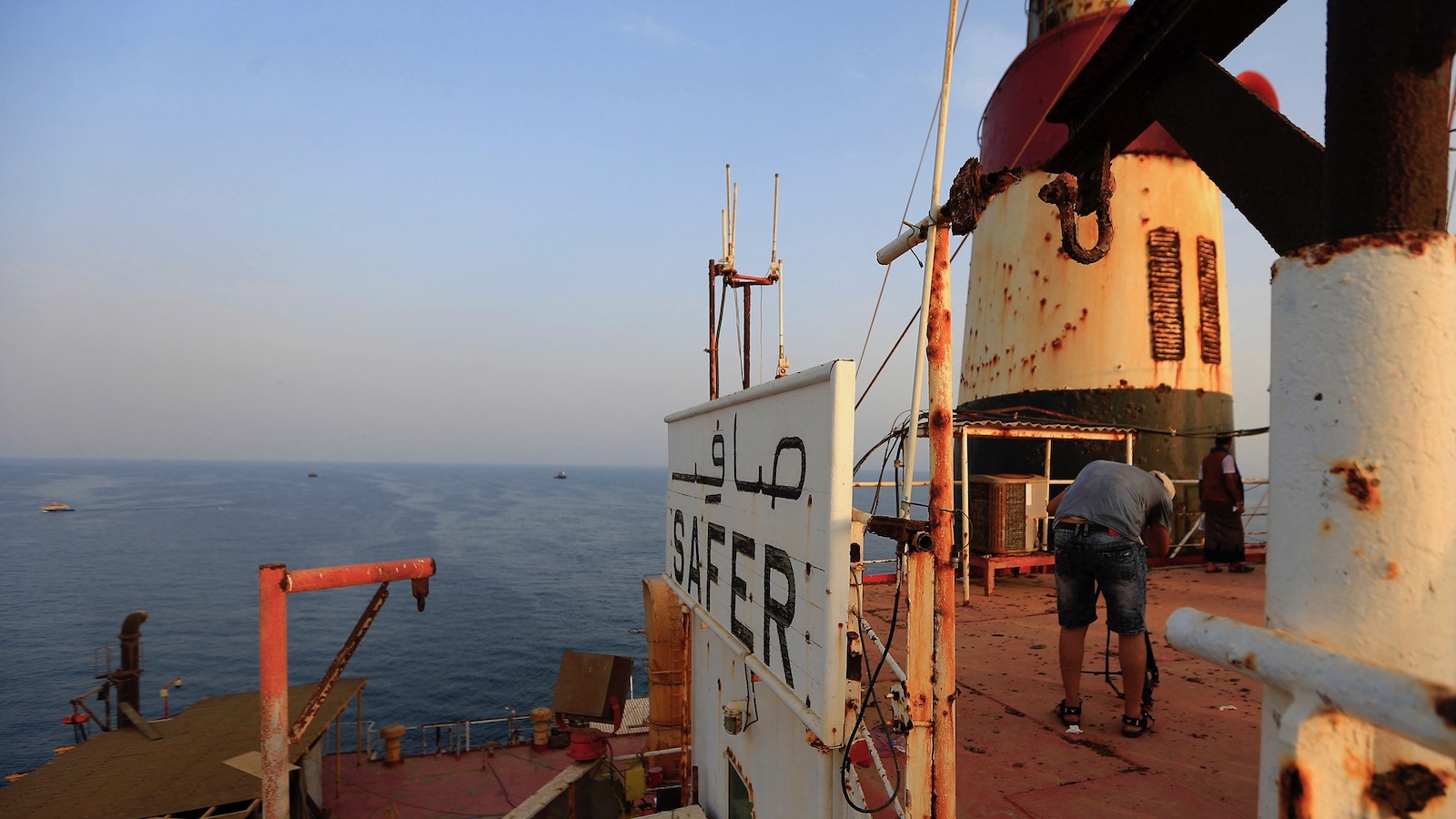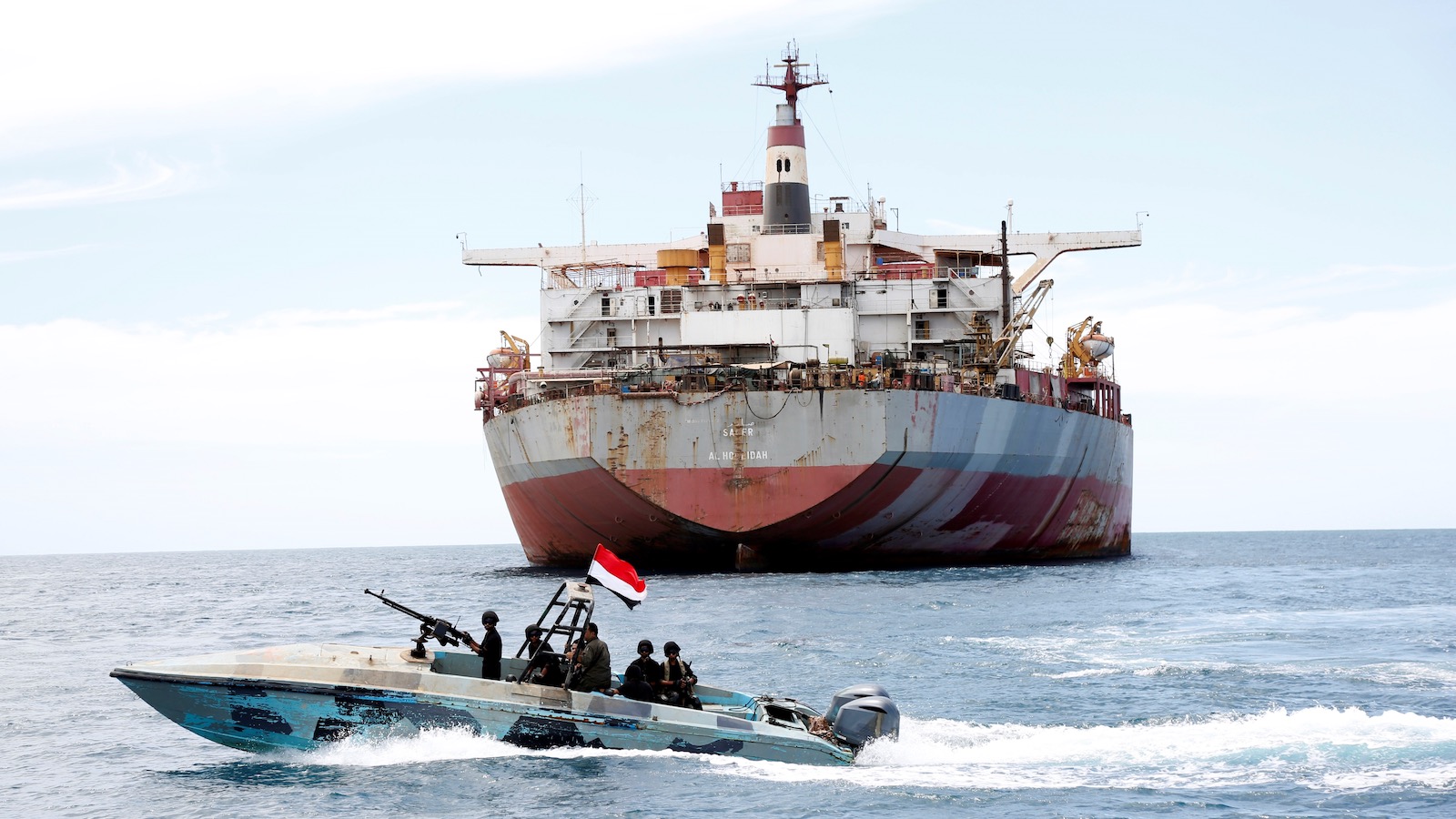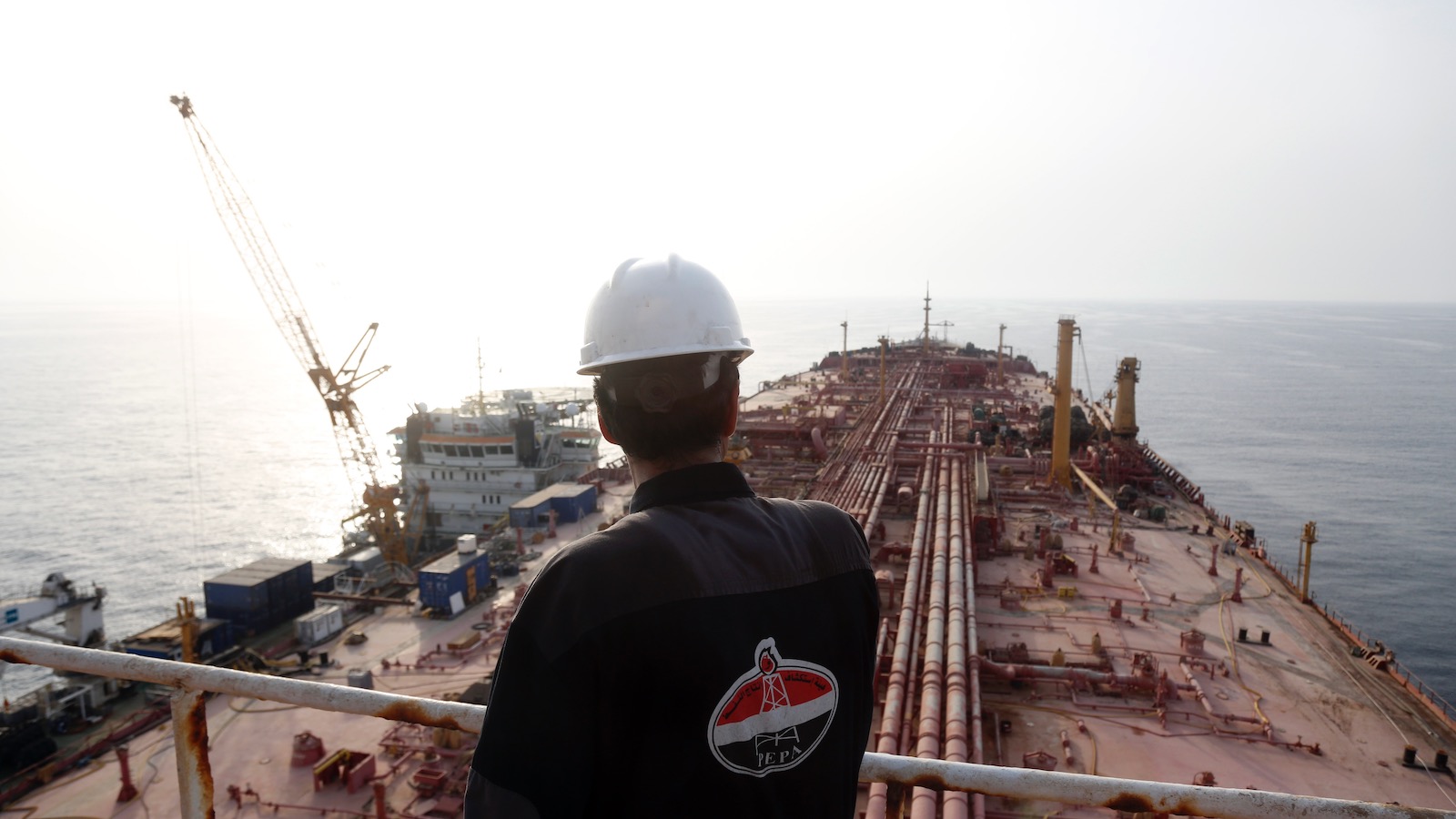Eco-conscious homebuyers on a budget have a new choice, 3D-printed homes made from low-carbon cement….
The post 3D-Printed Homes Come With a Lower Carbon Footprint appeared first on Earth911.

Eco-conscious homebuyers on a budget have a new choice, 3D-printed homes made from low-carbon cement….
The post 3D-Printed Homes Come With a Lower Carbon Footprint appeared first on Earth911.

Climate Connections is a collaboration between Grist and the Associated Press that explores how a changing climate is accelerating the spread of infectious diseases around the world, and how mitigation efforts demand a collective, global response. Read more here.
In 2022, doctors recorded the first confirmed case of tick-borne encephalitis virus acquired in the United Kingdom.
It began with a bike ride.
A 50-year-old man was mountain biking in the North Yorkshire Moors, a national park in England known for its vast expanses of woodland and purple heather. At some point on his ride, at least one black-legged tick burrowed into his skin. Five days later, the mountain biker developed symptoms commonly associated with a viral infection: fatigue, muscle pain, fever.
At first, he seemed to be on the mend, but about a week later, the man began to lose coordination. An MRI scan revealed he had developed encephalitis, or swelling of the brain. He had been infected with tick-borne encephalitis, or TBE, a potentially deadly disease that experts say is spreading into new regions due in large part to global warming.
For the past 30 years, the U.K. has become roughly 1 degree Celsius warmer on average compared to the historical norm. Studies have shown that several tick-borne illnesses are becoming more prevalent because of climate change. Public health officials are particularly concerned about TBE, which is deadlier than more well-known tick diseases such as Lyme due to the way it has quickly jumped from country to country.
Gábor Földvári, an expert at the Center for Ecological Research in Hungary, said the effects of climate change on TBE are unmistakable.
“It’s a really common problem that was absent 20 or 30 years ago.”
Ticks can’t survive more than a couple of days in temperatures below zero, but they’re able to persevere in very warm conditions as long as there’s enough humidity in the environment. As Earth warms on average and winters become milder, ticks are becoming active earlier in the year. Climate change affects ticks at every stage of their life cycle — egg, six-legged larva, eight-legged nymph, and adult — by extending the length of time ticks actively feed on humans and animals. Even a fraction of a degree of global warming creates more opportunity for ticks to breed and spread disease.
“The number of overwintering ticks is increasing, and in spring there is high activity of ticks,” said Gerhard Dobler, a doctor who works at the German Center for Infection Research. “This may increase the contact between infected ticks and humans and cause more disease.”
Since the virus was first discovered in the 1930s, it has mainly been found in Europe and parts of Asia, including Siberia and the northern regions of China. The same type of tick carries the disease in these areas, but the virus subtype — of which there are several — varies by region. In places where the virus is endemic, tick bites are the leading cause of encephalitis, though the virus can also be acquired by consuming raw milk from tick-infected cattle. TBE has not been found in the United States, though a few Americans have contracted the virus while traveling in Europe.
According to the World Health Organization, there are between 10,000 and 12,000 cases of the disease in Europe and northern Asia each year. The total number of cases worldwide is likely an undercount, as case counts are unreliable in countries where the population has low awareness of the disease and local health departments are not required to report cases to the government. But experts say there has been a clear uptick since the 1990s, especially in countries where the disease used to be uncommon.

“We see an increasing trend of human cases,” Dobler said, citing rising cases in Austria, Germany, Estonia, Latvia, and other European countries.
TBE is not always life-threatening. On average, about 10 percent of infections develop into the severe form of the illness, which often requires hospitalization. Once severe symptoms develop, however, there is no cure for the disease. The death rate among those who develop severe symptoms ranges from 1 to 35 percent, depending on the virus subtype, with the far-eastern subtype being the deadliest. In Europe, for example, 16 deaths were recorded in 2020 out of roughly 3,700 confirmed cases.
Up to half of survivors of severe TBE have lingering neurological problems, such as sleeplessness and aggressiveness. Many infected people are asymptomatic or only develop mild symptoms, Dobler said, so the true caseload could be up to 10 times higher in some regions than reports estimate.
While there are two TBE vaccines in circulation, vaccine uptake is low in regions where the virus is new. Neither vaccine covers all of the three most prevalent subtypes, and a 2020 study called for development of a new vaccine that offers higher protection against the virus. In Austria, for example, the TBE vaccine rate is near 85 percent, Dobler said, and yet the number of human cases continues to trend upward — a sign, in his opinion, of climate change’s influence on the disease.
[Read next: Mosquitos are moving to higher elevations — and so is malaria]
In Central and Northern Europe, where for the past decade average annual temperatures have been roughly 2 degrees Celsius above preindustrial times, documented cases of the virus have been rising in recent decades — evidence, some experts say, that rising global temperatures are conducive to more active ticks. The parasitic arachnids are also noted to be moving further north and higher in altitude as formerly inhospitable terrain warms to their preferred temperature range. Northern parts of Russia are a prime example of where TBE-infected ticks have moved in. And some previously tick-free mountains in Germany and Austria are reporting a 20-fold increase in cases over the past 10 years.
The virus’s growing shadow across Europe, Asia, and now parts of the United Kingdom throws the dangers of tick-borne disease into sharp relief. The U.K. bicyclist who was the first domestically acquired case of the disease survived his bout with TBE, but the episode serves as a warning to the region: Though the virus is still rare, it may not stay that way for long.
This story was originally published by Grist with the headline A brain-swelling illness spread by ticks is on the rise in Europe on Jul 25, 2023.

Ten days ago, the crew of a ship called the Nautica lifted anchor in Djibouti and motored north in the Red Sea. Two tugboats met the vessel about five and a half miles off the coast of Yemen, then guided it into place alongside the FSO Safer, a crumbling, abandoned oil tanker thought to hold 1 million barrels of crude.
Thus began an operation that’s the ecological equivalent of placing the pin back into a hand grenade.
Since 2019, the United Nations has likened the Safer (pronounced “suffer”) to a floating time bomb, one that could, through accident, structural failure, or attack, spill its cargo at any moment. That could release up to four times the oil spilled in the Exxon Valdez disaster, fouling the Red Sea for decades, if not centuries. Despite posing so great a risk for almost a decade, a vicious war in Yemen left the Safer beyond reach until May, when a U.N.-hired crew was allowed aboard to take the first steps in an emergency operation that could begin as early as today: transferring the oil to the Nautica, banishing the Safer to a scrapyard, and leaving the Nautica in its place.
Just getting this far is a diplomatic triumph for the U.N. Where others failed, it convinced the warring parties — particularly Houthi insurgents, who control the area around the Safer — that preventing an environmental and economic catastrophe was in their best interest. But some see this mission in a less flattering light: Even if all goes to plan — and in Yemen, that’s always an “if” — it will still leave a million barrels of oil floating in a conflict zone.
That left one Yemeni oil executive with state company SEPOC, which legally owns the Safer, grousing that the U.N. merely traded one time bomb for another. Sir Alan Duncan, a former British special envoy to Yemen who’s had a long career in the petroleum business, was more charitable when he called the operation progress but noted that the Nautica could wind up in the same position 10 years from now.
“It’s as good a plan as [the U.N.] were allowed to deliver,” he told Grist. “It’s only half a solution, but it’s better than nothing.”

The FSO Safer was an oil tanker built for another age. In the late 1950s, the temporary closure of the Suez Canal, which had long constrained the size of such vessels due to its breadth, inspired shipbuilders to think bigger. Then in the 1970s, a spike in world oil prices drove demand for even bulkier tankers that could move more crude at lower cost. The Esso Japan, built in 1976, was one of a class of “ultra large” oil vessels built in response to these trends. At almost 1,200 feet long and 230 feet wide, it could carry as much as 3 million barrels — twice the capacity of the Exxon Valdez, built a decade later.
In 1987, after a number of oil finds increased Yemen’s crude output, the vessel got a new name and career. Outfitted with updated gear and rechristened the FSO Safer, it was moored in the Red Sea. A pipeline two feet in diameter linked it to oil fields almost 275 miles away. Under its new owners, the Yemeni government, it became a key economic asset, a floating bank that could transfer the nation’s crude to tankers still working the high seas.
But even in this role, the Safer had a best-by date. It was to be decommissioned in 2000, according to Ian Ralby, a maritime-security consultant with IR Consilium who has done extensive research on the ship. SEPOC, one of Yemen’s national petroleum companies, decided it could stay in operation, getting maintenance as needed. But as war broke out in 2014, a fanatical rebel group called the Houthis sacked the capital of Sana’a. They soon realized a strategic gift lay just offshore: the Safer, loaded with black gold.
As the war intensified, the Safer drifted into the shadows. In 2015, an international coalition led by Saudi Arabia and the United Arab Emirates began a blistering, occasionally horrific, air campaign in an effort to restore the former government. The Houthis, supported by Iranian arms, have largely held their ground, forcing peace talks with the Saudis. But the Yemeni people have paid dearly. At least 377,000 have died of war, famine, and disease. Today, some 17 million Yemenis remain food-insecure and heavily reliant on humanitarian aid brought through the Houthi-controlled port of Hodeida, about 30 miles from the Safer.
It was not until years after the war began that the first reports by international analysts picked up on Yemeni warnings of the looming disaster. Tankers, even stationary ones, require vigilant maintenance against corrosion by heat, humidity, and the salty ocean environment. These reports showed that the Safer, save for the efforts of a small crew keeping the ship on life support, was not getting it.
This posed two critical risks. On a functioning oil tanker, inert gasses are periodically pumped into its tanks to keep the payload from catching fire or exploding. The Safer’s systems were kaput. Such ships also have the integrity of their hulls regularly checked. The Safer was last checked in 2015, a particular concern because unlike modern tankers, it has only one hull between its cargo and the sea. The combination of these factors meant the Safer could, with no notice whatsoever, crack like a walnut or erupt at the slightest spark.
“When you learn about it you think ‘holy s—,’” said Paul Horsman, an oil spill specialist with Greenpeace. “Why has this been left so long?”
A spill would cause breathtaking damage to Red Sea communities and the environment. According to U.N. estimates, in Yemen alone it would devastate the livelihoods of 2 million workers and family members dependent upon the fishing industry. Beyond sowing chaos in the aquatic food chain and casting toxic fumes over Yemeni farmland, it could poison Red Sea coral reefs currently under study for their resilience to ocean warming.
The cleanup, ballparked at $20 billion, would be daunting. The chemistry of Yemeni light crude makes it prone to mix with seawater, rather than float on top of it, and disperse over large areas. By the time crews arrived, said Chris Reddy, a senior scientist at the Woods Hole Oceanographic Institution, they might not even know where to start.

As it turned out, the Houthis and their enemies understood the risk the FSO Safer posed. They just disagreed on what to do with the oil, and their mutual hatred left them in no rush to strike a deal. Far from an imminent disaster that threatened them both, both sides came to treat the Safer as a strategic “tool of war,” as Musaed Aklan, a senior researcher with the Sana’a Center for Strategic Studies, put it.
An initial proposal, allegedly floated by Saudi Arabia and UAE, was to empty the Safer, cart off its oil and have the decrepit ship decommissioned in Bahrain. The Houthis rejected this flatly. Their position was cynical, but clear: They demanded an arrangement under the U.N. that would let them sell the crude and use at least part of the proceeds to govern the parts of Yemen they controlled. (Just what that might yield remains an open question, because petroleum degrades over time and prices fluctuate. Estimates have ranged from $50 to $90 million, though a new inspection may show otherwise.)
The Houthis also stipulated that no one could touch the ship without a sale in place. To their mind, whatever happened next was on Saudi Arabia, UAE, and their Western backers. “We hold the countries of aggression responsible for any damage that may befall the marine or navigational environment,” a Houthi leader tweeted in April 2019.
U.N. negotiators begged them to at least allow a safety inspection. But the Houthis, fearing an inspection might be a prelude to taking the oil, waffled. Meanwhile, the war fell into a bitter deadlock. The Saudis, Emiratis, and Yemenis seemed to grow more disengaged from the Safer, experts said, less concerned with addressing the crisis than making sure the Houthis took the blame for it. “If it explodes, it’s not our fault,” a Yemeni official told the Sana’a Center in 2020.
“Neither of Yemen’s main warring parties act like they have the slightest responsibility for preventing the massive catastrophe that could befall their country and the region,” the Center wrote, calling the behavior “obscene.”
The absurdity of the situation was underscored in November 2020, when the Houthis granted a U.N. request to inspect the Safer, only to scuttle the trip through excessive logistical and paperwork demands.
Though the U.N. didn’t have the political blessings to address the Safer, it wanted a plan ready. After the inspection debacle, a Yemeni wheat magnate, recognizing that a spill would close the country’s ports, suggested simply moving the oil to a new ship moored in the same spot. This would minimize the odds of an ecological and economic catastrophe without hurting anyone’s bargaining position.

By December 2021, the U.N. had sketched out a draft plan, estimated to cost $80 million. The switcheroo would unfold in two stages. In the first, a salvage ship would pull up alongside the Safer, send a crew to stabilize the oil, and confirm that the tanker could survive removing it. Then a second vessel, bought by the U.N., would connect to the Safer and suck the oil out of its belly.
That done, the Safer would be hauled off to scrap and the new tanker equipped with a buoy that could offload the crude to another vessel. That provided the diplomatic linchpin of the deal: It meant that if the Houthis and Yemeni government ever agreed on how to dispose of the petroleum, the necessary machinery was in place.
It was the first plan with the political and technical elements to have a chance of working. Yet inexplicably, despite years of fundraising efforts, at no point has it been fully funded. Due to Russia’s invasion of Ukraine, which has driven up prices for oil ships, the budget for the Safer rescue ballooned to $143 million. The U.N. estimates its current purse at $121 million. It chose to start the operation anyway, raiding $20 million from an emergency fund earmarked for things like mitigating droughts in Malawi and providing flood relief in the Philippines.
The U.N. calls this a temporary fix; to avoid violating its own regulations, it must somehow return that money. It is unlikely that any of it will come from the world’s governments, experts said. The largest funder so far is Saudi Arabia, which has pledged $18 million. Other anchor donors include the Netherlands, Germany, the United States, and the United Kingdom, each of which has offered at least $10 million.
Some might be innocent enough to ask how the world’s governments can’t pony up the last $20 million needed to prevent a $20 billion oil spill. According to one official familiar with the fundraising, the reason comes down to responsibility. No one country wants to give significantly more than any other, lest they stand out. “It creates ownership, so to speak, over a problem that isn’t necessarily yours,” this source told Grist.
This shortfall prompted the U.N. to pursue the 12 or so oil companies in Yemen which, before the war, likely used the Safer. This hasn’t been particularly fruitful. For one thing, it’s not entirely clear who owns — as a legal matter — the barrels sloshing in the Safer. The likely owners are the Yemeni government and the firms that were drilling there when the war started. Though there have been independent efforts to tabulate who owns what, they are not considered conclusive. That hampers efforts to assign responsibility.
The second barrier is liability. According to the fundraising official, oil-company lawyers fear that contributing to the rescue fund could cause reputational harm by associating them with the problem — or legal exposure if the salvage operation goes sideways.
Still, the International Association of Oil and Gas Producers did pledge $12 million. Horsman, of Greenpeace, called that a pittance, pointing to the billions in profits oil companies have booked since the Ukraine invasion. “CEOs could find that money in their top drawers,” he said.

So what broke the deadlock and made this salvage plan possible? Experts interviewed for this story told Grist it was the gradual convergence of many factors.
Nadwa Al-Dawsari, a nonresident scholar at the Middle East Institute, said a major one was that Saudi Arabia, unable to deal the Houthis a knockout blow, developed war fatigue. This has reduced the intensity of the conflict over the last year, creating space on both sides for luxuries like addressing the Safer. “The Houthis realized, ‘I guess we can let this one go,’” Dawsari said.
Throughout the fighting, many ceasefires have been signed and broken. But diplomats say the latest, signed in March 2022, has been respected, allowing the possibility of a truce to emerge. This thaw helped the U.N. sell both sides on the rescue mission. Negotiators shuttled between the Houthis and the Yemeni government, framing it as a way to prevent a spill while punting on the knottier questions about what to do with the oil. By late 2022 both sides had formally blessed it. This gave the U.N. a clear runway for its final preparations, which included buying an oil tanker, hiring a salvage crew, and taking out a one-of-a-kind insurance policy for a one-of-a-kind tanker rescue.
Over the last seven weeks, teams with SMIT Salvage, the Dutch contractor the U.N. hired to execute the Safer operation, puffed inert gas into its oil tanks, sent divers to check its hull, and shored up the ship’s pipes and pumps. SMIT is a company of some renown; in 2021, it dug out the Ever Given, a container ship that lodged in the Suez Canal, causing a global shipping snafu.
The Safer operation, which is expected to take two weeks to complete, is comparatively routine by industry standards. But no one who has followed the saga is exhaling just yet. “The ship has been so precarious all these years,” said Ralby, the consultant with IR Consilium. “We could just get badly unlucky.” A pipe could burst onboard, or the underwater pipeline could rupture. It’s also suspected that the waters off Yemen have been mined during the conflict. If one broke loose, it could bring disaster.
The U.N.’s funding shortfall remains unresolved. After years of repeated fundraisers — like the online crowdfunding campaign that raised $300,000, including a contribution from a Maryland elementary school — government donors are considered tapped. It’s left to private donors to provide the last $20 million. As an inducement, the U.N. has offered oil companies contracts that it believes would free them of liability if they chip in. So far, it hasn’t produced any donations, according to the fundraising official.
Looming in the background is the most unpredictable variable of all: the war. In the long and brutal arc of the conflict in Yemen, the current moment qualifies as a relative calm. Peace talks between Houthi and Saudi officials have not yet collapsed, and violence is at a low ebb. Regardless, some analysts feel it’s doubtful a truce will resolve the deep social and economic fissures that sparked the conflict. If history’s a guide, Al-Dawsari said, it’s just a matter of time before the Houthis launch a new offensive.
If hostilities resume, what would that mean for the FSO Safer, or its replacement, the Nautica (which, through an agreement between the Houthis and the recognized Yemeni government, has been renamed the MOST Yemen)? Outside experts note that either vessel would be within range of Houthi artillery or drones. U.N. officials say they have no choice but to trust everyone involved not to target it.
“It is an operation for which there are no absolute safety nets. Let’s be very clear,” Achim Steiner, administrator of the United Nations Development Programme, said in May, responding to a reporter’s question about the security of the site. “So far we’re receiving all the collaboration that all sides have committed. But you mentioned terrorist attacks. It’s a possibility.”
There are those who argue there isn’t much to learn from the long, strange, and as-yet unresolved story of the FSO Safer. They say the crisis was born of a freakish coincidence: An aging ship carrying a volatile cargo in the sovereign waters of a nation rendered helpless by war. “If there wasn’t a conflict, this problem would have been solved very easily,” said the official involved in fundraising.
Yet the Safer is a parable about where the environment, and the existential crisis the planet finds itself in, stands within the hierarchy of global priorities. One reason so many world leaders, legislators, and citizens of the world struggle to tackle climate change is that they find it abstract: The science predicts long-term shifts with consequences that will appear in unpredictable places and ways. Yet even in the case of the FSO Safer, with its imminent, local, and easily understood threat of grave harm, Gulf nations and the world community still needed five years to solve half the problem.
It’s been a sobering education, said the Sana’a Center’s Musaed Aklan — but also a reminder to not give up. “During conflicts, political interests take priority, while environmental issues become secondary,” he said. “However, we must continue pushing for environmental issues and, most importantly, the lives of locals and their livelihoods. Political progress is difficult but necessary, and we must push leaders to compromise for the greater good.”
This story was originally published by Grist with the headline The race to defuse an oil ‘time bomb’ disaster threatening the Red Sea on Jul 25, 2023.
The Biden administration has proposed a new energy efficiency rule for residential water heaters, a move that would jumpstart the adoption of energy-saving heat pumps and significantly reduce carbon emissions from U.S. homes.
The federal Department of Energy, or DOE, says the proposal would eliminate more than 500 million metric tons of carbon emissions over 30 years — equal to the combined annual emissions of 63 million U.S. homes. Overall, the agency says the new standards would save consumers more than $11 billion in annual energy costs and shrink energy use from water heaters in homes by 21 percent.
These actions “improve outdated efficiency standards for common household appliances, which is essential to slashing utility bills for American families and cutting harmful carbon emissions,” said Secretary of Energy Jennifer Granholm in a statement last Friday.
The rule would effectively require all households using traditional electric water heaters to switch to heat pump water heaters once their old appliance reaches the end of its life. The proposal also includes new standards for gas-fired water heaters that would require technology improvements to cut down on their energy use. If finalized, the new rule would go into effect in 2029.
Heat pump water heaters are two to three times more energy efficient than traditional electric resistance models. They work by pulling heat from the air outside to warm up water in a storage tank, instead of directly generating heat.
Yet despite the potential energy and cost savings, only 1 percent of U.S. households currently use heat pump water heaters. A recent analysis by the nonprofit Rewiring America found that in order for the U.S. to reach net-zero emissions by 2050, households would need to purchase 200,000 more heat pump water heaters than usual over the next three years. Those extra units sold would help the sector reach a crucial tipping point called “market acceleration,” where sales will start to grow sustainably on their own.
While the rule will not go into effect for at least six years, the Biden administration has already made efforts to boost sales of heat pumps through the 2022 Inflation Reduction Act, President Joe Biden’s signature climate spending law. Heat pump water heaters — as well as other electric household appliances like induction stoves — are eligible for rebates and tax credits under the law.
Water heating accounts for about 13 percent of both home energy use and utility costs in the U.S. The DOE says replacing traditional electric water heaters with heat pump alternatives would save households about $1,900 over the life of an appliance.
The agency last updated residential water heater standards in 2010. Last year, the department proposed updated water heater standards for commercial buildings for the first time in over 20 years.
Several water heater manufacturers, environmental organizations, and consumer advocacy groups welcomed the new standards in a joint statement on Friday, highlighting both climate benefits and cost savings for consumers.
“Although long overdue, the efficiency standards proposed by DOE will deliver significant savings for consumers over the life of the water heater,” said Susan Weinstock, CEO of the Consumer Federation of America, a consumer advocacy nonprofit. “We urge the Department to move with all due speed to finalize these much-needed standards that do away with inefficient, energy-wasting water heaters so that consumers will pay less on their energy bills.”
This story was originally published by Grist with the headline New rule for water heaters could help Americans save energy and money on Jul 25, 2023.
Do you need a new car? Are you considering choosing an electric vehicle over a…
The post Home “Eco”nomics — Should You Buy a New Car? appeared first on Earth911.
If you have an old hardback book that you no longer want and are unable…
The post We Earthlings: Do This Before Recycling Your Hardback Books appeared first on Earth911.
Temperatures in the waters off the coast of southern Florida and the Florida Keys this month have been as high as 97 degrees Fahrenheit, according to the National Data Buoy Center.
In the summer, waters in the Keys are normally reminiscent of bath water, but temperatures that high can threaten coral reefs. And it’s still fairly early in the season. Heat stress usually affects corals the most in August and September, reported The New York Times.
“We’re entering uncharted territories,” said Derek Manzello, an ecologist and the coordinator of NOAA’s Coral Reef Watch program, as The New York Times reported.
The longer exceptionally high temperatures last, the more stressed corals can get, reported The Conversation. Part of the reason is that, unlike other marine animals, corals can’t swim in search of a cooler spot.
Coral reefs are so colorful and vibrant because they have the most biodiversity of any marine ecosystem, according to the National Oceanic and Atmospheric Administration (NOAA). Though they only cover 0.2 percent of the seabed, coral reefs support approximately 25 percent of all ocean life.
Coral reefs like those in the Florida Keys support the economy by attracting tourists, and also support the fish and fisheries that feed millions.
Warming waters due to climate change can be so damaging to corals because they are so sensitive to changes of even a degree or two.
The planet’s oceans absorb the excess heat generated by the burning of fossil fuels, and when water temperatures get too high, it causes corals to expel the algae they feed upon, turning them white, The New York Times reported. If the waters stay warm for too long, or bleaching events happen too close together, corals may not recover.
According to one study, the world has lost half its living corals since the 1950s.
Corals “host a microscopic symbiotic algae called zooxanthella that photosynthesizes just like plants, providing food to the coral. When the surrounding waters get too warm for too long, the zooxanthellae leave the coral, and the coral can turn pale or white,” Ian Enochs, a research ecologist with NOAA, wrote in The Conversation. “If corals stay bleached, they can become energetically compromised and ultimately die. When corals die or their growth slows, these beautiful, complex reef habitats start disappearing and can eventually erode to sand.”
About 70 percent of Florida Keys reefs have become “net erosional,” research published in November of last year found, which means more habitat is being lost than built.
“Building these reefs has taken corals tens of thousands of years. Decimating them has taken humans mere decades. Since the late 1970s, healthy coral cover in the Florida Keys has fallen 90 percent,” reported Climate.gov.
Coral bleaching has been seen recently in other parts of the world, including in Costa Rica, El Salvador, Mexico, Columbia, Belize and Panama, The Conversation reported.
The overarching cause of the current marine heat wave is human-caused global warming, which has been exacerbated by El Niño. Thankfully, mass coral death hasn’t been seen with this extreme bout of ocean warming yet.
“Coral bleaching on a large scale has really been documented only since the early 1980s. When I talk to people who have been fishing and diving in the Florida Keys since before I was born, they have amazing stories of how vibrant the reefs used to be. They know firsthand how bad things have become because they have lived it,” Enochs wrote in The Conversation. “There isn’t currently a single silver-bullet solution, but ignoring the harm being done is not an option. There is simply too much at stake.”
The post Extreme Water Temperatures in Florida Keys Cause Coral Reefs to Bleach Weeks Early, Scientists Say appeared first on EcoWatch.

A wildfire that started in Klickitat County, Washington, on Friday afternoon destroyed more than 30,000 acres in less than a day and continues to grow as it feeds on brush, grass and forest vegetation.
Fire crews are working to extinguish the Newell Road Wildfire near Bickleton, which has resulted in the evacuation of residents in the rural area, and is threatening farms, livestock, homes and wind and solar farms, reported KOMO News.
“It’s very difficult terrain to fight fire,” said Allen Lebovitz, a spokesperson for the state’s Department of Natural Resources, as Reuters reported. “We are under a red flag warning. That’s a firefighter’s worst nightmare because the humidity is dropping precipitously. The winds are picking up. And so the fire carries extremely fast.”
The wildfire is burning just to the north of where the Oregon-Washington border is represented by the Columbia River. It has destroyed several structures and is threatening a natural gas pipeline.
Lebovitz said the fire was heading in the direction of the Yakama Indian Reservation.
Officials haven’t announced what caused the fire, and there have been no injuries or deaths reported.
“The climate change problem, the fuse has been burning for decades, and now the climate change bomb has gone off. The scientists are telling us that this is the new age,” Washington Governor Jay Inslee said yesterday, according to The Independent.
According to the National Interagency Fire Center, there are currently 36 large fires burning throughout the country, including eight new large fires as of yesterday in Arizona, Oregon, Idaho and Wyoming.
“Since January, 28,470 wildfires have burned 847,349 acres across the United States, still below the 10-year average of 32,686 wildfires and 3,393,317 acres burned,” the National Interagency Fire Center website said.
Fire officials warned the public against using drones to get a look at wildfires, the fire center said.
“Unauthorized drone flights pose serious risks to firefighter and public safety operations and the effectiveness of wildfire suppression efforts. When your drone is in the air near a wildfire, our aircraft must be grounded, putting the lives of firefighters at risk and can cause wildfires to become larger and more costly,” the fire center website said.
According to the National Oceanic and Atmospheric Administration, climate change is making wildfire seasons more intense.
“I don’t think the U.S. has enough firefighters for these fires, and Canada most certainly does not,” said Daniel Perrakis, a fire research scientist with the Canadian Forest Service in British Columbia, as reported by NPR. “Climate change is very significant. We’ve got drought levels that are… at least in the extreme category, and the fire season’s [arriving] early.”

The post Washington State Wildfires Threaten Animals, Homes, Crops, Renewable Energy Farms appeared first on EcoWatch.
After the National Oceanic and Atmospheric Administration confirmed that last month was the hottest June on record, a climate expert at NASA is now predicting that July could be Earth’s hottest month on record.
Gavin Schmidt, director of Goddard Institute for Space Studies at NASA, warned at a NASA meeting on climate and recent extreme weather events that July could be the warmest in centuries or millennia.
“We are seeing unprecedented changes all over the world — the heat waves that we are seeing in the U.S., in Europe, in China are demolishing records left, right and center,” Schmidt said, as reported by the Los Angeles Times. “This last June was the warmest June on record, and we anticipate, with the understanding of what’s going on on a day-by-day basis, that July is likely to be the warmest absolute month on record.”
In early July, Earth passed the highest average global temperature record three days in a row. Currently, much of the world is experiencing extreme heat, wildfires and flooding. Last week, NPR reported that about one-third of people in the U.S. were under excessive heat warnings, particularly as a heat wave came across the Southwest. In Phoenix, Arizona, temperatures have soared over 110°F for 20 days and counting in what could be the worst recorded heat wave for the desert city.
Scientists predicted a strong El Niño this year, and the World Meteorological Organization reported in June that this year’s El Niño could continue with moderate or greater strength through the end of the year. That could mean more extreme heat and increasing ocean surface temperatures. Ocean surface temperatures already broke records earlier this year.
“Pretty much everywhere, particularly in the oceans, we’ve been seeing record-breaking sea-surface temperatures — even outside of the tropics,” Schmidt said, as Space.com reported. “We anticipate that is going to continue, and the reason why is because we continue to put greenhouse gases into the atmosphere. Until we stop doing that, temperatures will keep on rising.”
Schmidt also predicted that 2023 could be the warmest year on record, as El Niño could impact temperatures over the next couple of years and global warming continues to cause rising temperature averages. Schmidt pointed out that the extreme heat is not surprising, as temperatures have been rising each decade for the past 40 years.
“What we know from science is that human activity and principally greenhouse gas emissions are unavoidably causing the warming that we’re seeing on our planet,” senior climate adviser Kate Calvin said in the meeting, as reported by The Guardian. “This is impacting people and ecosystems around the world.”
In addition to warning about the potential record-breaking temperatures, the scientists in the meeting shared NASA’s climate work, which includes missions to track greenhouse gas emissions. The agency also shared its new Earth Information Center, where people will be able to access real-time climate data from NASA’s satellites.
The post July Could Be Earth’s Hottest Month on Record, Climate Expert Warns appeared first on EcoWatch.